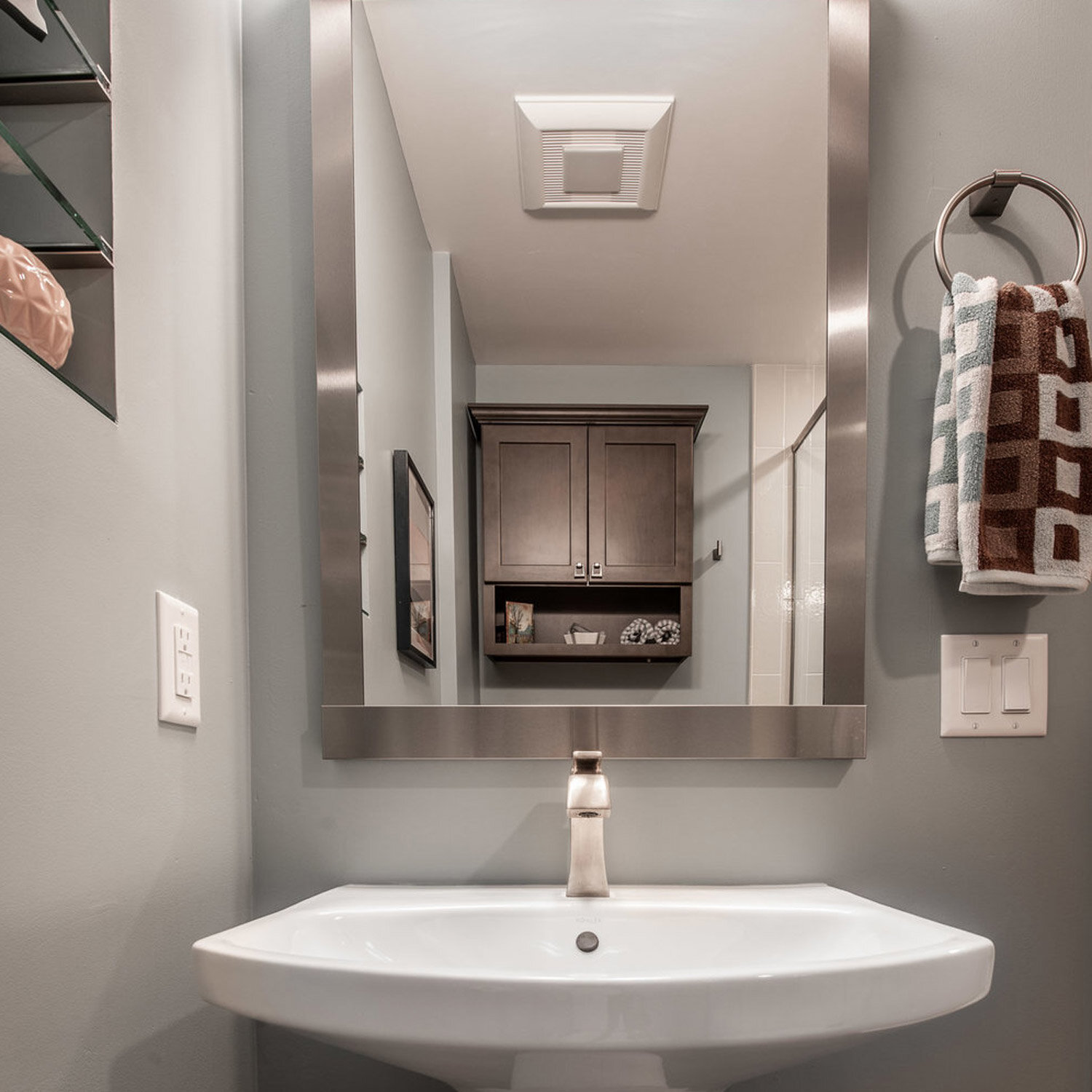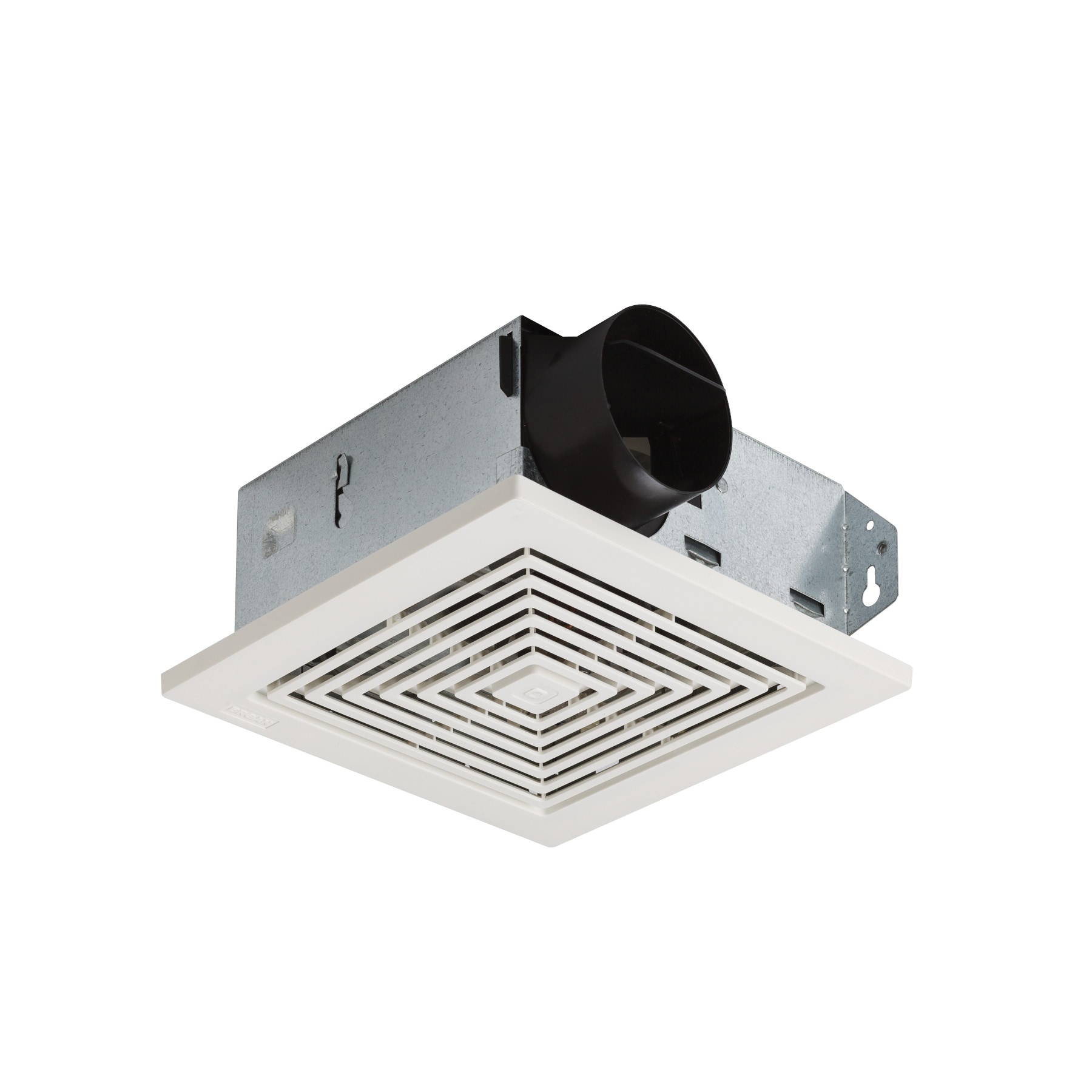Technical Specifications

When selecting a 7.5 bathroom fan, several technical specifications should be considered to ensure optimal performance and suitability for the intended application. These specifications include dimensions, CFM (cubic feet per minute) ratings, noise levels, motor types, and variable speed capabilities.
Dimensions
7.5 bathroom fans typically come in standard sizes to fit common bathroom configurations. The most common dimensions are 8 inches by 8 inches and 10 inches by 10 inches, which can accommodate most standard bathroom ceiling joists. However, it is important to measure the available space in the bathroom before purchasing a fan to ensure a proper fit.
CFM Ratings
CFM ratings indicate the volume of air a fan can move in one minute. For bathrooms, a CFM rating of 7.5 is generally sufficient to provide adequate ventilation and remove moisture and odors effectively. Higher CFM ratings may be necessary for larger bathrooms or those with multiple fixtures, such as a shower and bathtub.
The soft hum of the 7.5 bathroom fan whisked away the steam, revealing a hidden world beyond its blades. The walls, adorned in dark purple wallpaper , shimmered with an ethereal glow, casting an enchanting spell upon the space. The fan’s gentle breeze danced across the surface, creating a symphony of shadows and light, a mesmerizing ballet that drew the gaze inward, back to the steady rhythm of the 7.5 bathroom fan.
Noise Levels
Noise levels are measured in sones or decibels (dB). Quieter fans are preferred for bathrooms, as they create less noise pollution and allow for more comfortable use. 7.5 bathroom fans typically have noise levels ranging from 1.0 to 4.0 sones, with lower sones indicating quieter operation.
The 7.5 bathroom fan’s gentle hum was a soothing symphony, its rhythmic airflow creating a tranquil ambiance. As I gazed at its white blades spinning against the ceiling, my mind drifted to the vibrant hues and intricate patterns of kitchen wall art.
The fan’s steady rotation echoed the harmonious balance of colors and shapes in the kitchen, creating a subtle symphony of aesthetics that filled the space with a sense of serenity.
Motor Types
There are three main types of motors used in 7.5 bathroom fans: shaded pole, permanent split capacitor (PSC), and electronically commutated motors (ECM). Shaded pole motors are the most basic and affordable option, but they are also less efficient and produce more noise. PSC motors offer improved efficiency and quieter operation, while ECM motors are the most advanced and efficient, providing the quietest and most energy-efficient performance.
Variable Speed Fans
Variable speed fans allow for adjustable airflow, providing greater control over ventilation. They can be set to lower speeds for quiet operation during regular use and higher speeds for more powerful ventilation when needed, such as after a shower. Variable speed fans can help save energy by reducing airflow when not necessary.
Installation Considerations: 7.5 Bathroom Fan

Installing a 7.5 bathroom fan is essential for maintaining proper ventilation and reducing moisture and odor. The process involves electrical wiring, ductwork, and mounting.
Electrical Wiring
Wiring a bathroom fan requires connecting it to a dedicated electrical circuit with a GFCI (Ground Fault Circuit Interrupter) outlet. This ensures safety by preventing electrical shocks in the presence of moisture.
Ductwork
Ductwork connects the fan to the outside, allowing it to exhaust air and moisture. Use flexible or rigid ducting with a minimum diameter of 4 inches. Ensure the ductwork is properly sealed to prevent air leaks.
Mounting Options
Bathroom fans come in various mounting options:
– Ceiling Mount: Installed directly on the ceiling, providing a discreet and efficient solution.
– Wall Mount: Mounted on a wall, ideal for bathrooms with limited ceiling space or for aesthetics.
– Inline Mount: Installed within the ductwork, providing a hidden and quieter option.
Proper Ventilation
Adequate ventilation is crucial for removing moisture and preventing mold growth. Calculate the required CFM (cubic feet per minute) for your bathroom using the formula:
CFM = (Length x Width x Height) x 0.13
where Length, Width, and Height are in feet.
Maintenance and Troubleshooting

Maintaining and troubleshooting a 7.5 bathroom fan ensures optimal performance, extends its lifespan, and prevents potential issues. Regular cleaning, timely replacement of components, and addressing common problems contribute to its smooth operation.
Cleaning and Maintenance
Cleaning the fan blades and housing removes dust, dirt, and debris, improving airflow and reducing noise. Use a soft cloth or brush to gently wipe away any buildup. Replace the fan blades if they become damaged or warped, as unbalanced blades can cause vibration and noise.
The motor requires lubrication every few months to ensure smooth operation and extend its lifespan. Apply a few drops of lightweight oil to the motor bearings, taking care not to over-lubricate.
Troubleshooting, 7.5 bathroom fan
Noise
Excessive noise can be caused by unbalanced fan blades, a loose motor, or worn bearings. Check the fan blades for damage and ensure they are securely attached. Tighten any loose screws or bolts around the motor and replace worn bearings.
Vibration
Vibration often results from unbalanced fan blades or a loose motor. Inspect the fan blades for damage and ensure they are securely attached. Tighten any loose screws or bolts around the motor and consider replacing the fan blades if they are damaged.
Lack of Airflow
Insufficient airflow can be caused by a clogged fan filter, blocked ductwork, or a faulty motor. Clean or replace the fan filter regularly. Inspect the ductwork for any obstructions and clear them. If the motor is not functioning correctly, it may need to be replaced.
Extending Lifespan
- Regular cleaning and maintenance prevent dirt and debris buildup, reducing wear and tear on the fan components.
- Using the fan only when necessary minimizes unnecessary wear and tear.
- Installing a timer switch allows for automated operation, preventing extended periods of unnecessary use.
- Avoid placing heavy objects on or near the fan to prevent damage.